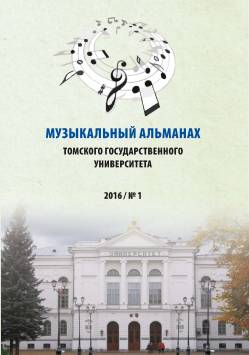Editorial.pdf Even with a quick familiarization with the contents of the Journal, one can notice a rather significant predominance of questions of music performance over questions of its comprehension. In principle, this is quite natural: the performance of music is mostly its meaning. It is through the performance that the music goes into the audio format, which is the main way of its existence and is the only way to the perceiving consciousness of the listener. Performance is a complex and mysterious process of decoding and transmitting an artistic message that has existed in the form of musical text for many years - and maybe for many centuries ... Fortunately, in this issue there is no first section that has already become habitual - the section "Vita brevis, Ars longa", it is replaced by another section - " The Reasonable, the d, the eternal." It contains pedagogical thoughts and projects related to the professional and general emotional development of the young generation of artists (articles by V. Maximov and P. Volkova). The following articles (V. Andreeva in collaboration with A. Kanaeva and T. Vvedenskaya) are devoted to the analysis of specific works (the symphonic poem St. Petersburg Visions by S. Slonimsky and the opera the Dawns are Quiet Here by K. Mol-chanov) and the images of characters (in particular, Rita Osyanina). The section "The Laws of Musical Genres" appeared for the first time (article by E. Willert). "Technology of mastery" represents the movement from vocal mastery (T. Ershukova) from the accompanist (V. Petrova and T. Sotnikova) to the solo piano (V. Budnikov). The section "Concert Life of the City" contains an interview with such legends of Tomsk musical life as V. Fedorets and O. Mazepina, and with the chairman of the Krasnoyarsk organization of the Union of Composers of Russia, member of the editorial board of our Journal V. Ponomarev. Bon voyage through the pages of the Musical Almanac!
| Prikhodovskaya Ekaterina A. | Tomsk State University | | prihkatja@mail.ru |

 Вы можете добавить статью
Вы можете добавить статью